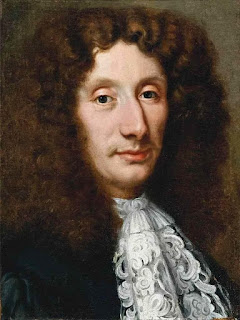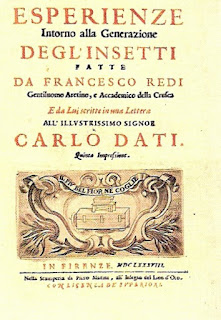Tenor star who turned Verona’s ancient Arena into major venue
 |
| Giovanni Zenatello sang all the major tenor roles in a 35-year career |
Zenatello spent a large part of his career in the United States but is remembered with enormous respect in Italy - and in particular in his home city - for having teamed up with impresario Ottone Rivato and others to put on a spectacular staging of Giuseppe Verdi’s Aida at the Arena in 1913, the first operatic production of the century to take place within the remains of the Roman amphitheatre and the forerunner of hundreds more.
The tenor was already an important figure in Italian opera for his interpretations of Verdi’s Otello and most of the other dramatic or heroic leading male roles in the popular works of the day. He had also been the first to sing the role of Pinkerton in Giacomo Puccini’s Madama Butterfly.
Zenatello initially trained as a baritone and when he made his professional stage debut in Belluno in 1898, taking on the roles of Silvio in Ruggero Leoncavallo’s Pagliacci and Alfio in Pietro Mascagni’s Cavalleria rusticana, it was as a baritone.
However, it is said he was never comfortable in the baritone range and when a chance came to take the tenor role of Canio in Pagliacci at the Real Teatro Mercadante in Naples the following year, stepping in at short notice when the tenor due to play the role was indisposed, Zenatello seized the opportunity and never looked back.
 |
| Zenatello was famous for his interpretation of Verdi's Otello |
It was at La Scala in 1904 that Zenatello was part of Madama Butterfly’s infamous premiere, when a hostile audience, unimpressed with what the critics slammed as a rushed and under-rehearsed production, greeted the cast with boos and catcalls and forced Puccini to pull the opera after one night.
It was relaunched some weeks later in Brescia. Rosina Storchio, who had been cast as Cio-Cio San in the original in Milan, did not reappear, but Zenatello gave the character of Pinkerton, a US naval officer, a successful second debut. The controversy did no harm to Zenatello’s reputation, even if it left the composer feeling somewhat chastened.
Zenatello made his debut at the Royal Opera House, Covent Garden in 1905 and at the Manhattan Opera House in New York in 1907. He was never part of the company at the New York Metropolitan but stepped in to sing the role of Radamès in Aida in 1909 when Enrico Caruso was undergoing a medical procedure in Milan.
Based in Manhattan, where he shared his home with the Spanish mezzo-soprano Maria Gay, Zenatello was a member of the Boston Opera Company from 1909 to 1914 but often toured, in South America and Mexico as well as Europe. He succeeded Francesco Tamagno, the original Otello, in being recognised as the greatest exponent of the Verdi role, which he performed more than 300 times.
 |
| Zenatello with the Spanish soprano Maria Gay, with whom he shared his life |
The performance, in the heat of August, was a huge success and Zenatello and Gay returned in 1914, this time putting on Georges Bizet’s Carmen. It was the start of the Arena’s annual summer festival.
Zenatello retired from performing in 1933 and devoted himself to teaching. His singing school in New York helped develop the careers of several future stars, among them the coloratura soprano Lily Pons, whom he discovered in Paris and trained up to perform at the Met, and his fellow Veronese tenor Nino Martini, who made his Met debut in 1933 in Rigoletto, opposite Lily Pons.
In 1947, in the role of artistic director of the summer season at the Arena, Zenatello made another decision that would have a profound influence on the opera world, when he gave a young and relatively unknown soprano called Maria Callas the main part in Amilcare Ponchielli’s La Gioconda.
She had been recommended to Zenatello by Nicola Rossi-Lemeni, a bass who had been due to star with Callas in a Chicago production of Turandot that would have been the American-born soprano’s first major performance had the company not folded on the eve of the run. Zenatello watched her audition in New York and was quickly convinced, as was Tullio Serafin, the conductor in Verona, who would go on to play an integral role in Callas’s career.
Zenatello died in New York in 1949 at the age of 73.
 |
| The Arena di Verona held more than 30,000 spectators for events in Roman times |
The Arena di Verona in Piazza Bra is a wonderful surviving example of a first-century Roman amphitheatre. The arena was built in AD 30 on a site which was then beyond the city walls. It could host more than 30,000 spectators in ancient times, double the capacity permitted today. Having fallen into disrepair following the collapse of the Roman empire, the outer of what were three rings of arches disappearing completely, the Arena was the scene of jousting events and other tournaments and games during the Renaissance, with some use for plays and musical concerts documented later. Since Zenatello and his friends established it as the world’s premier open-air opera venue, it has become the stage for regular pop concerts as well, with many of the biggest names giving performances there.
Find accommodation in Verona with Booking.com
 |
| A view of the interior of the Teatro Filarmonico in Verona, the city's principal opera theatre |
Verona’s musical scene does not begin and end with summer operas in the Roman amphitheatre. Either side of the outdoor season, which runs from June to September, the Arena’s resident orchestra and chorus is based at the Teatro Filarmonico in Via dei Mutilati, just a few minutes’ walk away. Designed by Francesco Galli Bibiena, the ducal architect at Mantua, it was built between 1716 and 1732 and opened with a performance of La fida ninfa, an opera by Antonio Vivaldi. It had to be rebuilt after a fire in 1749 and after it was destroyed by enemy bombing during the Second World War. Patiently rebuilt so that its interior exactly resembled the original, it was not re-inaugurated until 1975, opening with Antonio Salieri’s Falstaff. Nowadays, it hosts ballet, opera and concert seasons.
More reading:
The Italian impresario who transformed the New York Met
The Neapolitan who founded the San Francisco Opera
The music publisher who 'discovered' the great Puccini
Also on this day:
1905: The birth of industrialist and scooter manufacturer Enrico Piaggio
1914: The birth of Nobel Prize-winning physiologist Renato Dulbecco
1921: The birth of award-winning actress Giulietta Masina
1990: The death of Autogrill pioneer Mario Pavesi
(Picture credits: Arena di Verona by depetukhova from Pixabay; Teatro Filarmonico by Adert via Wikimedia Commons)
























